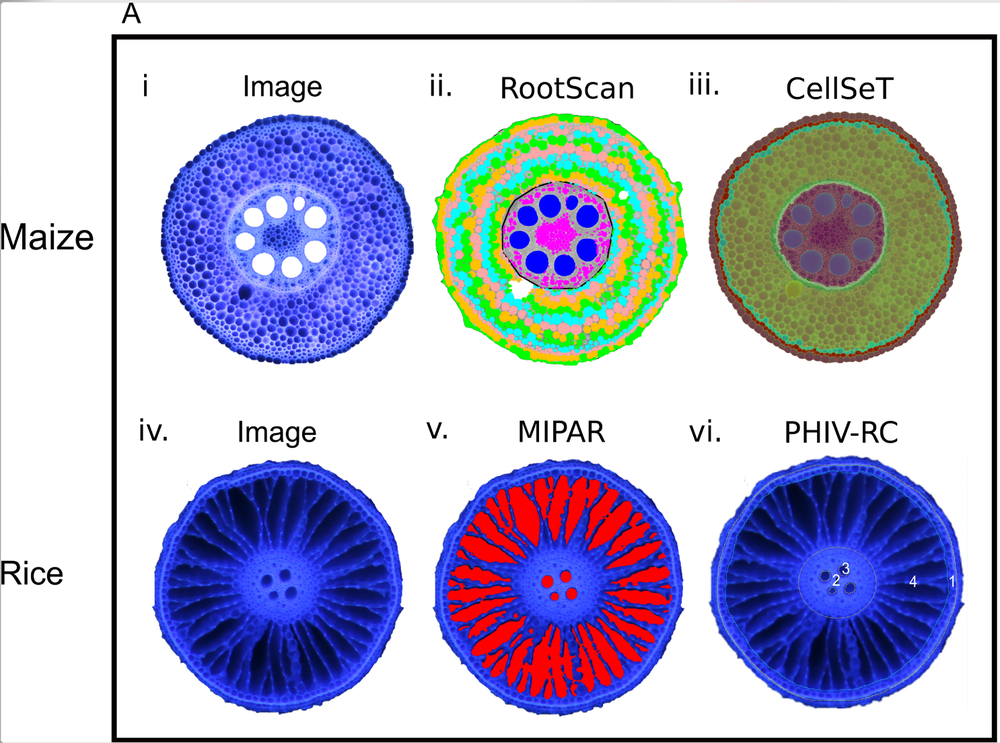
Models of root anatomy
Authors
Lynch JP, CF. Strock, HM Schneider, JS Sidhu, I Ajmera, T Galindo-Castañeda, SP Klein, MT Hanlon
Source
Plant and Soil 466, 21-63
DOI 10.1007/s11104-021-05010-y
Download Options
PLSO open access
Abstract
Background
Suboptimal water and nutrient availability are primary constraints in global agriculture. Root anatomy plays key roles in soil resource acquisition. In this article we summarize evidence that root anatomical phenotypes present opportunities for crop breeding.
Scope
Root anatomical phenotypes influence soil resource acquisition by regulating the metabolic cost of soil exploration, exploitation of the rhizosphere, the penetration of hard soil domains, the axial and radial transport of water, and interactions with soil biota including mycorrhizal fungi, pathogens, insects, and the rhizosphere microbiome. For each of these topics we provide examples of anatomical phenotypes which merit attention as selection targets for crop improvement. Several cross-cutting issues are addressed including the importance of phenotypic plasticity, integrated phenotypes, C sequestration, in silico modeling, and novel methods to phenotype root anatomy including image analysis tools.
Conclusions
An array of anatomical phenes have substantial importance for the acquisition of water and nutrients. Substantial phenotypic variation exists in crop germplasm. New tools and methods are making it easier to phenotype root anatomy, determine its genetic control, and understand its utility for plant fitness. Root anatomical phenotypes are underutilized yet attractive breeding targets for the development of the efficient, resilient crops urgently needed in global agriculture.

